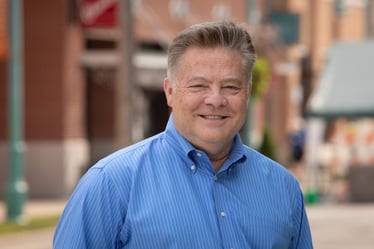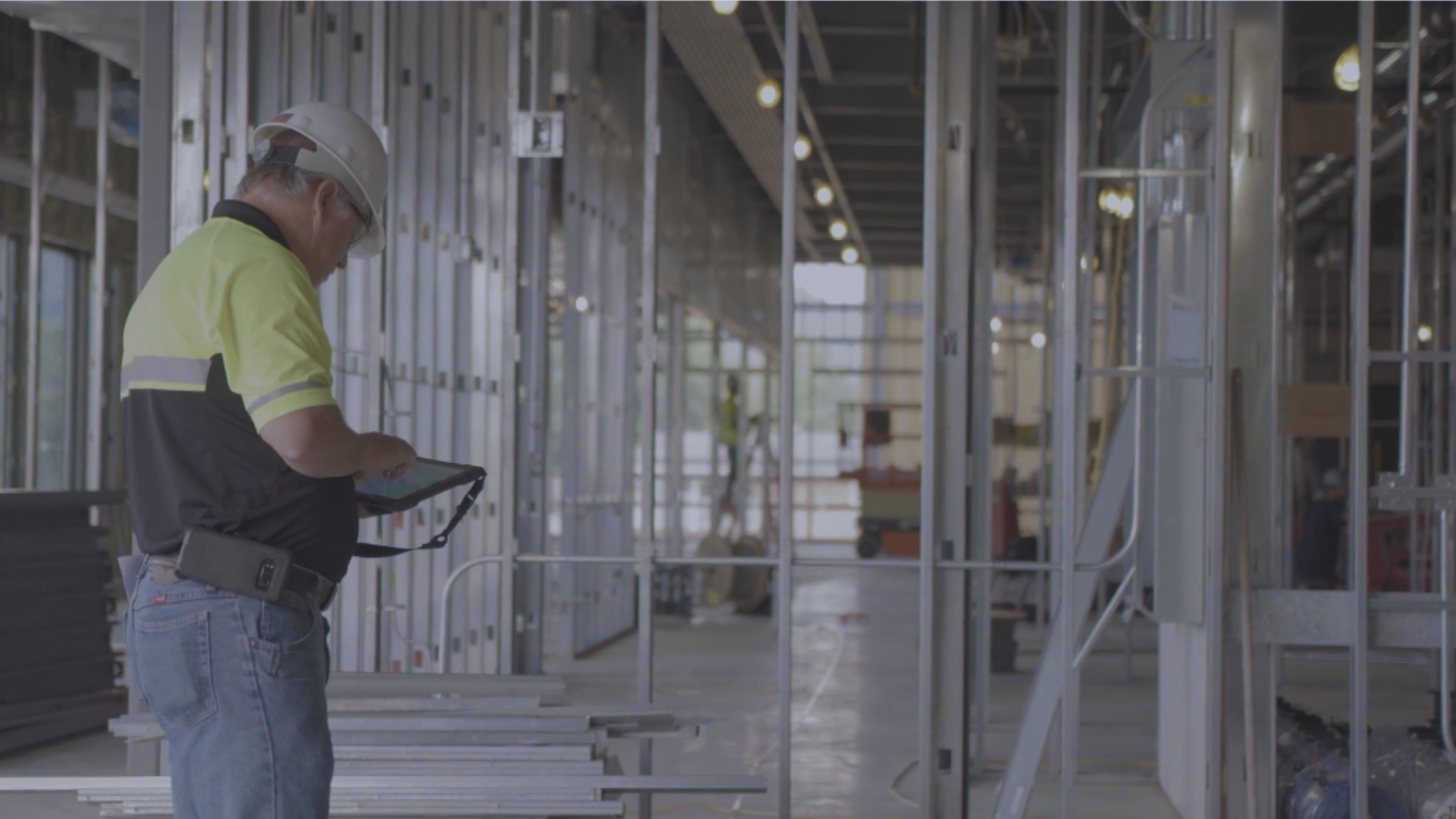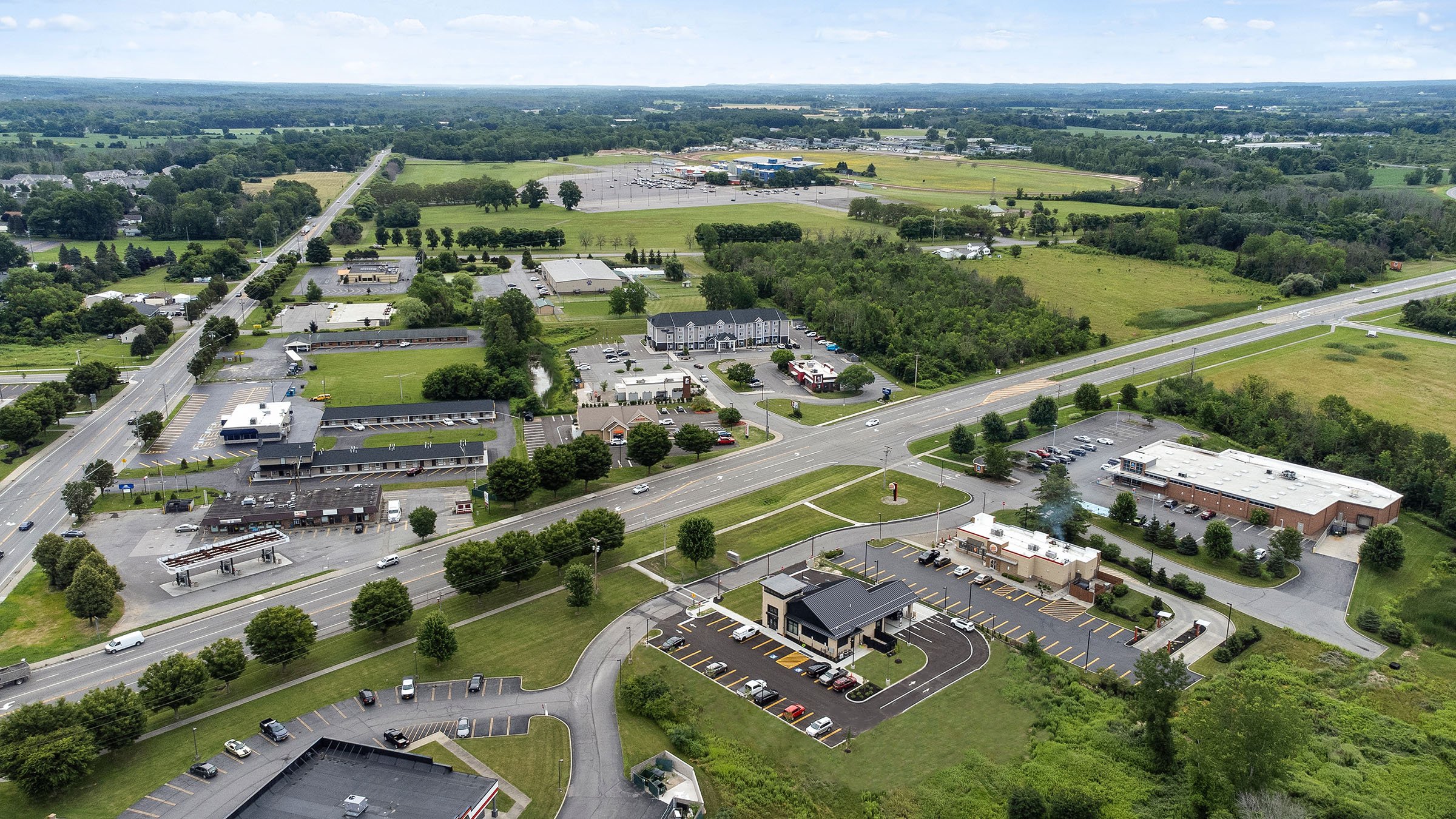"Wait and See" ... And Risk Getting Left Behind.
 The COVID-19 pandemic forced leaders of financial institutions to wrestle with tough decisions, including if and how to proceed with capital investments. While many chose to wait, an analysis of financial institutions’ actions during and immediately following the Great Recession of 2007-2009 showed that those who approached the economic downturn as a catalyst for action and adaptation came out of the recession on solid footing for sustainability and growth.
The COVID-19 pandemic forced leaders of financial institutions to wrestle with tough decisions, including if and how to proceed with capital investments. While many chose to wait, an analysis of financial institutions’ actions during and immediately following the Great Recession of 2007-2009 showed that those who approached the economic downturn as a catalyst for action and adaptation came out of the recession on solid footing for sustainability and growth.
Those who didn’t invest in growth initiatives were more likely to struggle and/or be merged/acquired.
Today, we’re seeing many behavioral parallels. Hindsight is 20/20 and the reality is that while some financial institutions were in a position to make investments throughout 2020, the majority took the “wait and see” approach. Many of the institutions that waited are now ready to act. However, they’re facing significant challenges including inflation and a long line of other organizations (within and outside of the Financial Services Industry) that are similarly looking to invest. That pent-up demand is having a major impact on the industry.
If you’re ready to build or renovate, rebrand, refresh and/or overhaul your branch technology, there are some key things I urge you to consider.
Expediency Can't Trump Strategy.
 For financial institutions feeling the urgency of pursuing their previously delayed building or other network refresh project - it’s critical that expediency doesn’t trump the importance of a strategic market analysis.
For financial institutions feeling the urgency of pursuing their previously delayed building or other network refresh project - it’s critical that expediency doesn’t trump the importance of a strategic market analysis.
With news of soaring construction prices, supply chain demands and labor shortages, it is natural to focus on the bricks and mortar and dollars and cents of a project, but financial institutions would be ill-advised to let these elements alone drive their path forward.
There is a human element to the services that financial institutions provide. The goal of any major network investment should be to bring a company’s mission, vision and brand to life in a relevant way for the marketplace and for consumers. If there isn’t a clear connection to those elements, a building project will not be worth the investment. The key to ensuring a project is worth it is to do a thorough analysis to identify the true needs and opportunities available and vet out the best way to capitalize on them. Done well, the analysis that happens before branch renovations, relocations, or network additions tells you if the opportunity for growth is real, and if it is worth investment.
Once the analysis is done, however, it is time for fast action. Construction costs and material availability is changing rapidly. In this climate, financial institutions, and any organization, pursuing a building project need a partner that can provide real-time intelligence and a quick pace that adapts to the changing market to minimize unnecessary cost increases. For these reasons, and many more, financial institutions can and should carefully consider their vendors’ abilities, looking specifically at the agility of their design, architecture, construction, and technology partners and how much they know about one another’s trade. In today’s economic climate, it is more apparent than ever that bringing all these functions under the same roof with a design-build partner is likely the best return on investment.
Collaboration Keeps Costs In Check.
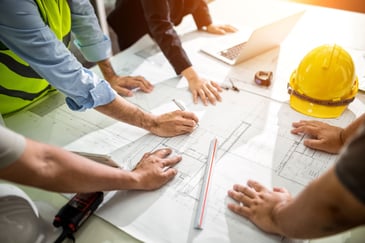 When starting with an independent architecture/design firm, it could take months to develop and sign off on a concept that then must be brought to the marketplace for material and labor pricing. With current inflation rates, that decentralized approach could mean a five to ten percent increase in costs and likely more back-and-forth negotiation and budget reconciliation. A design-builder, however, addresses those issues in real-time, incorporating market conditions into the actual design and can even procure commodities at earlier stages in the process.
When starting with an independent architecture/design firm, it could take months to develop and sign off on a concept that then must be brought to the marketplace for material and labor pricing. With current inflation rates, that decentralized approach could mean a five to ten percent increase in costs and likely more back-and-forth negotiation and budget reconciliation. A design-builder, however, addresses those issues in real-time, incorporating market conditions into the actual design and can even procure commodities at earlier stages in the process.
What does that look like in practice? For our team at La Macchia Group, because all functions of a project are under the same roof and working together, on parallel tracks, we collectively have a more robust understanding of a project and its needs quite early in the design process. That means that before a design is even final, we can begin to procure key building materials like steel, precast concrete, and glass. Doing so at an early stage in the process saves our clients money and gives them a more comprehensive and accurate idea of total project cost and timeline.
The inherent collaboration within a design-builder means they can also design a project around current-state availability of materials and supplies. A design-builder can look at copper, lumber, paint and more and let that information determine next steps and influence design work. As an example, bar joists are needed for standard roofs in commercial buildings. In recent months, bar joists have been backordered, resulting in a timeframe that is out of line with most customers’ expectations. Knowing that upfront, our team at La Macchia Group is pivoting and finding new, innovative ways to design - without bar joists. Instead, we are leveraging precast concrete or industrial steel based on our supplier relationships and what is available in the desired timeframe.
It comes down to collaboration - not only between the owner and the design builder, but also within the design-build process. With a design-builder, the process happens under one roof and often around one table, allowing for challenges to be identified and mitigated upfront and with a great level of transparency.
Build More Than Walls, Build Experiences.
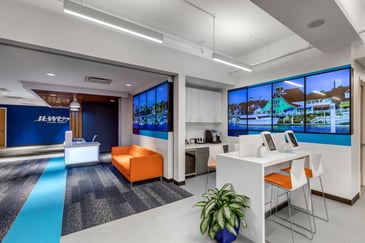 To be a player in what is a complex financial market, you must create an engaging, relevant experience for your consumers. That means extending your considerations to the why behind the bricks and mortar of your branches or operations centers.
To be a player in what is a complex financial market, you must create an engaging, relevant experience for your consumers. That means extending your considerations to the why behind the bricks and mortar of your branches or operations centers.
While digital screens and technology are increasingly being placed at the center of creating engaging experiences, simply having the tech is not enough. It’s the combination of the technology, architecture, branded design and communications fueled by a deep understanding of retail design trends and consumer financial behaviors that makes the difference.
Together those things create meaningful and memorable journeys through your branches. Financial institutions that leverage their market and consumer insights to develop rich content that can be showcased through the latest technology set themselves apart and create mission-driven, brand-centered environments and experiences that today’s consumers are seeking.
When you have the right framework in place, adapting to market trends, consumer needs…or even global pandemics… is quicker, more comprehensive, and, as a result, more relevant. Relevancy to your consumer matters and can be the driver of creating memorable first impressions that lead to interactive experiences and, ultimately, long-term loyalty.
.png?width=248&height=73&name=Logo%20w%20Tag%20-%20Color@300x%20(1).png)

 The COVID-19 pandemic forced leaders of financial institutions to wrestle with tough decisions, including if and how to proceed with capital investments. While many chose to wait, an analysis of financial institutions’ actions during and immediately following the Great Recession of 2007-2009 showed that those who approached the economic downturn as a catalyst for action and adaptation
The COVID-19 pandemic forced leaders of financial institutions to wrestle with tough decisions, including if and how to proceed with capital investments. While many chose to wait, an analysis of financial institutions’ actions during and immediately following the Great Recession of 2007-2009 showed that those who approached the economic downturn as a catalyst for action and adaptation  For financial institutions feeling the urgency of pursuing their previously delayed building or other network refresh project - it’s critical that expediency doesn’t trump the importance of a
For financial institutions feeling the urgency of pursuing their previously delayed building or other network refresh project - it’s critical that expediency doesn’t trump the importance of a  When starting with an independent architecture/design firm, it could take months to develop and sign off on a concept that then must be brought to the marketplace for material and labor pricing. With current inflation rates, that decentralized approach could mean a five to ten percent increase in costs and likely more back-and-forth negotiation and budget reconciliation. A design-builder, however, addresses those issues in real-time, incorporating market conditions into the actual design and can even procure commodities at earlier stages in the process.
When starting with an independent architecture/design firm, it could take months to develop and sign off on a concept that then must be brought to the marketplace for material and labor pricing. With current inflation rates, that decentralized approach could mean a five to ten percent increase in costs and likely more back-and-forth negotiation and budget reconciliation. A design-builder, however, addresses those issues in real-time, incorporating market conditions into the actual design and can even procure commodities at earlier stages in the process. To be a player in what is a complex financial market, you must create an engaging, relevant experience for your consumers. That means extending your considerations to the why behind the bricks and mortar of your branches or operations centers.
To be a player in what is a complex financial market, you must create an engaging, relevant experience for your consumers. That means extending your considerations to the why behind the bricks and mortar of your branches or operations centers.